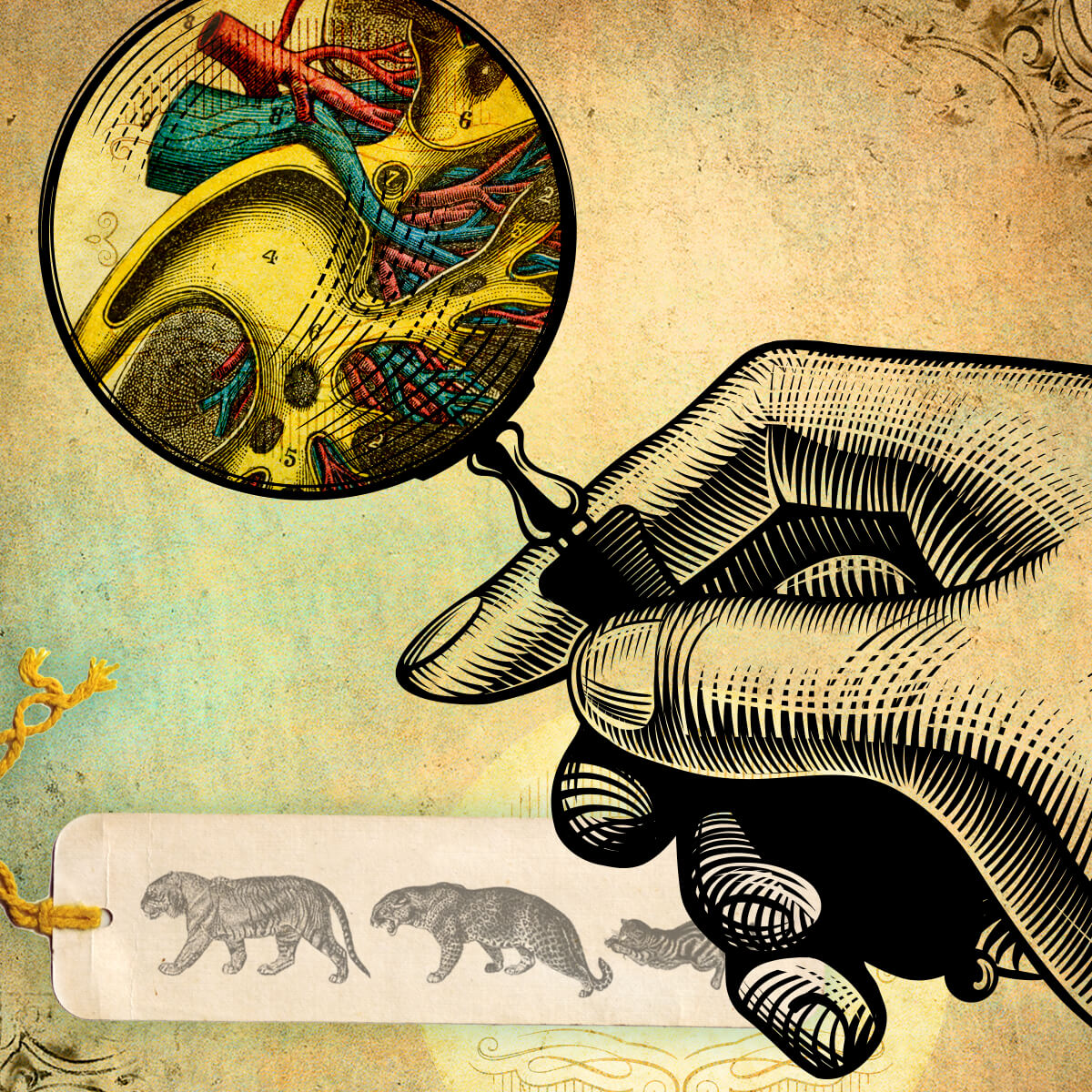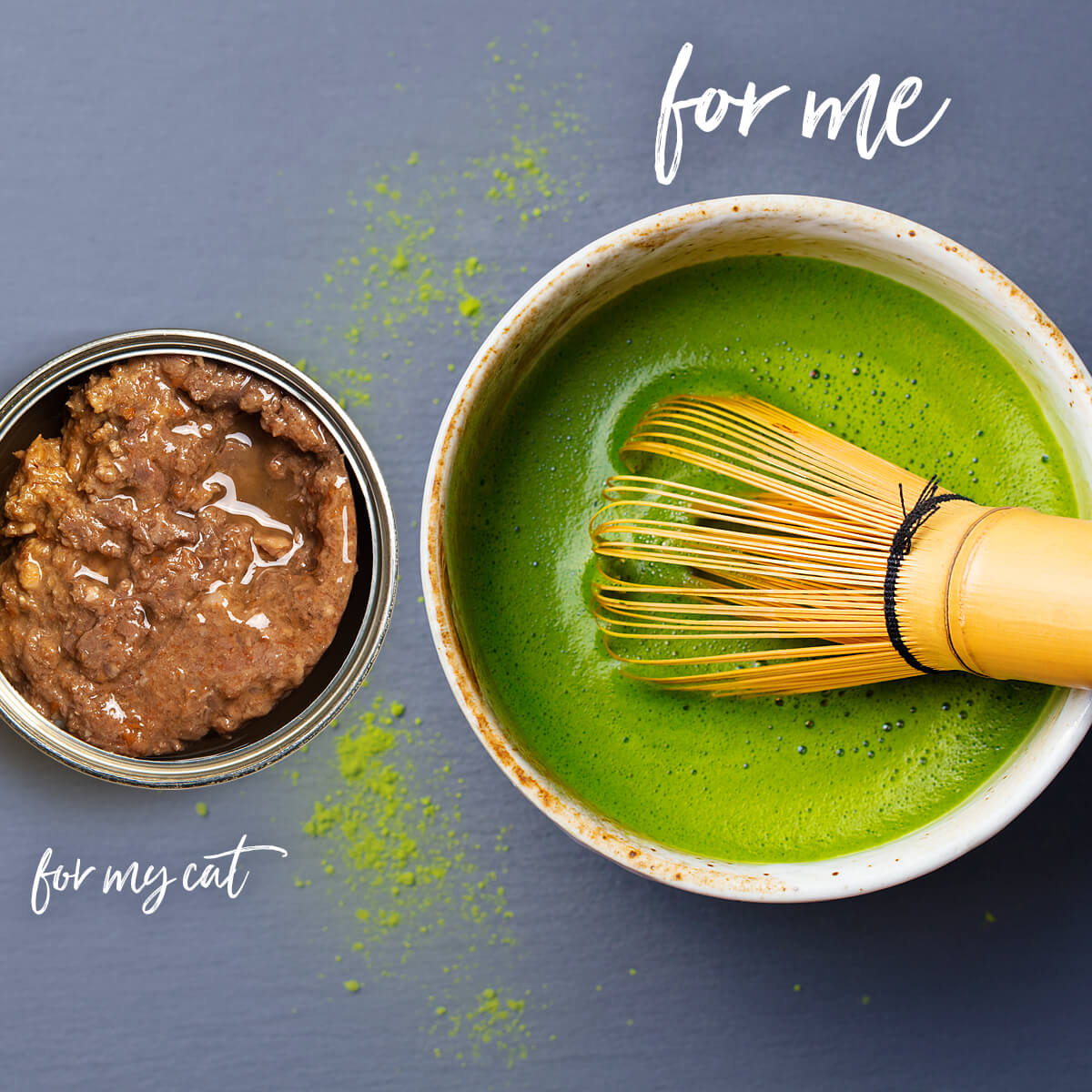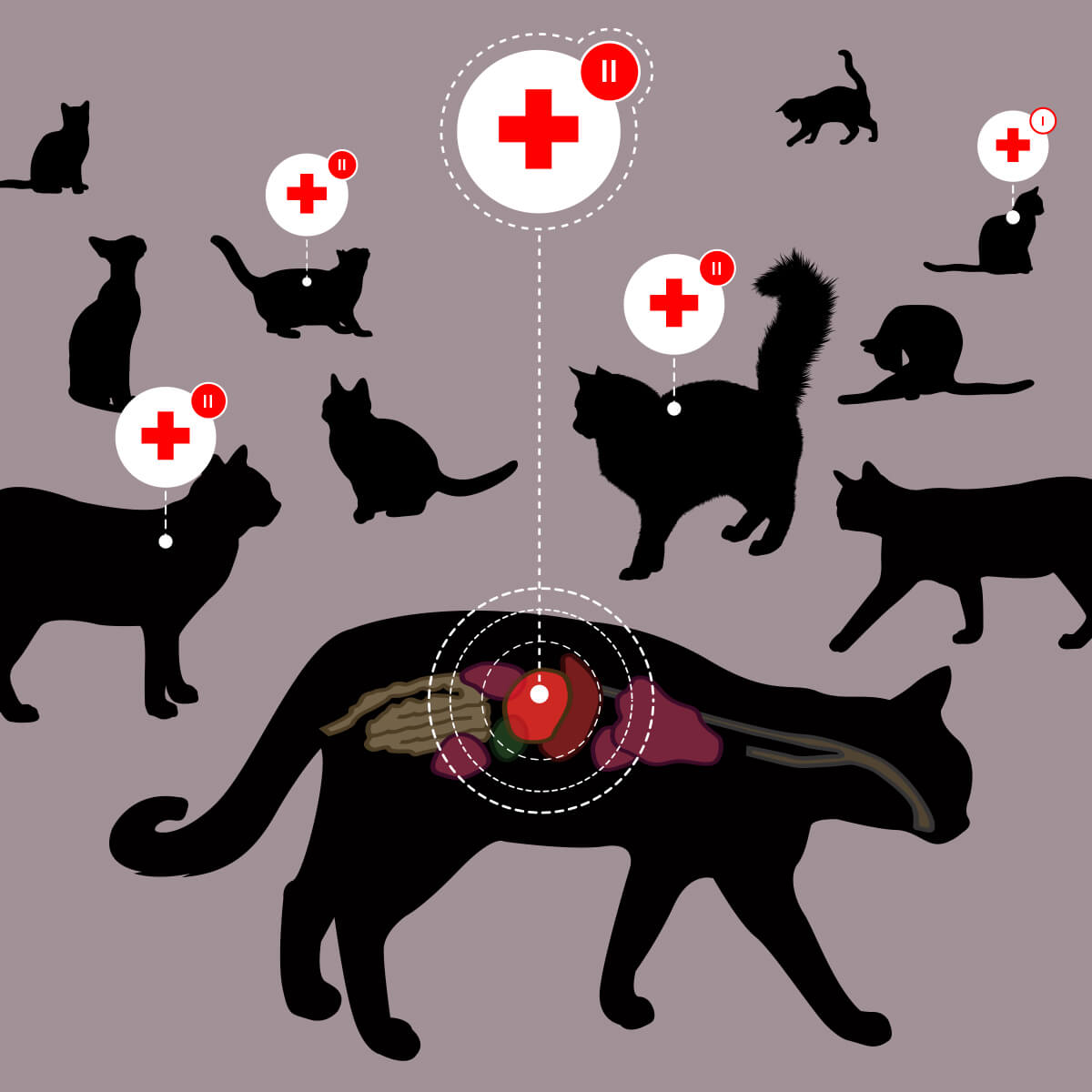Why our product descriptions don’t include a carbohydrate value
We are often asked why our product descriptions on our website don’t include values for the carbohydrate content (often “carbs” for short) of our food. We love that cat owners take an interest in this, as it is important that cats don’t eat too many carbohydrates. The simple answer to why we don’t show the carb content of our food is that it is minimal. Our food is made out of meat. We add taurine, some oils and products like spirulina or krill but they are additives selected for their health benefits. The bulk of our products is meat. No carbs.
We are also asked if our Cheers products contain carbs. The answer is the same – no, there are zero carbs in Cheers. It is broth, that has been cooked from top-quality pieces of meat for a long time.
Carbohydrate content of meat
We use five kinds of meat: chicken, turkey, goose, duck & rabbit. Our foods are either made of a single meat (mono-protein) or a mixture of two different kinds of meat (duo-protein). All meat we use for production is EU certified for animal feed and comes from certified suppliers.
Meat as such does not contain any carbohydrates. The carb level of a piece of animal muscle is zero. So if there are zero carbs in meat, then our food also has zero or close to zero carbohydrates. We say close to zero, as algae contain some carbohydrates. Our special range of natural wet cat food with spirulina or chlorella has some carbs. The level is so small that we do not put it into our composition chart.
What about animal derivatives?
In cat food, the term meat refers to muscle tissue, while animal derivatives include nutrient-rich organs like liver, hearts, and gizzards. These components are essential for providing cats with the vitamins, minerals, and amino acids they need for optimal health. A well-balanced formula ensures that these nutrients are neither too high nor too low, supporting a cat’s overall well-being.
Worth noting: This should not be confused with animal by-products, which refer to non-nutritive parts such as fur, feathers, beaks, tails, or skin. While animal derivatives are highly nutritious, by-products are generally not included in quality cat food formulas designed for balanced nutrition.
Do cats need any carbohydrates in their diet?
In general, they do not. The domestic cat’s wild ancestors are obligate carnivores that consume prey containing only minimal amounts of carbohydrates. Evolution adapted the cat’s metabolism and physiology to this diet strictly composed of animal tissues.
The cats that we love these days are still similar to their wild ancestors. They still have this unique digestive and metabolic system. Data from the dietary habits of wild cats shows that the typical diet contains:
- crude protein – 52%,
- crude fat – 46%, and
- nitrogen-free extract (NFE) content of 2% of metabolizable energy (%ME).
These dietary habits have led to specific and unique nutritional requirements. The metabolic differences in cats mean that their dietary requirements for protein, arginine, taurine, methionine and cystine, arachidonic acid, niacin, pyridoxine, vitamin A and vitamin D are greater than for omnivores. And meat is the best source for these nutrients.
Health impacts of carbohydrates on cats
The fact that cats evolved by consuming low-carbohydrate prey and the increased understanding of the unique feline metabolism has led to speculations that high-carbohydrate diets could be bad for feline health. The most commonly expressed concern is that cats poorly digest and metabolise carbohydrates. This alone can lead to digestive discomfort. Researchers have evaluated high-carbohydrate diets as a risk factor for the development of feline obesity and diabetes mellitus. Research is also underway on using low-carbohydrate diets for the prevention and treatment of these metabolic diseases.
While cats can digest carbohydrates to some extent, small amounts may not pose a major issue. Nevertheless, at 3coty®, we have chosen to follow a strict carnivore diet philosophy, which is why our products are made exclusively from meat.
Determining the carbohydrate level in cat food
As we say in the introduction, we are pleased that the negative health impacts of high levels of carbohydrates in a cat’s diet are increasingly well-known. We love that owners want to feed their cats low-carb cat food. That’s why we make (nearly) no-carb cat food. For cats with diabetes or specific dietary needs, monitoring carbohydrate intake is crucial. However, freely available online calculators often misrepresent carbohydrate levels in natural, meat-only diets like BARF or 3coty.
Care needs to be taken to differentiate between carbohydrates “As-Fed” and carbohydrates on a “Dry Matter Basis (DMB)” – see box. A calculation that indicates a liquid complementary food like Cheers! contains 57% carbohydrates on a Dry Matter Basis is misleading. There is no dry matter, so even if 57% of the dry matter was carbohydrates, there would still be no carbohydrates.
In natural diets like ours, the residual percentage in the standard calculations (see below) comes from natural cooking byproducts like peptides, amino acids, and dissolved solids—not carbohydrates. This is why 3coty® Natural Cat Food contains zero added carbohydrates—just pure, natural nutrition tailored to your cat’s health.
If your cat has diabetes, trust the ingredient list and analytical values on the label, not generalized calculators. With our cat food, you can be confident that our meat-based recipes are carbohydrate-free and ideal for maintaining your cat’s well-being.
The truth about online carbohydrate calculators
Freely available online nutrient calculators appear to make it easy to determine the carb level of individual products. These tools often estimate carbohydrates by subtracting all declared nutrients (protein, fat, fibre, ash, and moisture) from 100% to arrive at a residual value.
Many calculators misinterpret this residual value as “carbs,” leading to unnecessarily high readings that are far from accurate. This assumption may be valid for foods containing fillers, grains, or gelling agents but becomes misleading for meat-only products. This generalised method of calculating carbs on a Dry Matter Basis is flawed, especially for meat-only foods like ours, which contain no added carbohydrates.
If you are trying to compare the relative contents of a dry food to a wet food, the calculators can give you an indication. But any cat food with >80% moisture is closer to a drink and therefore not comparable to dry food. The output from a calculator using a dry matter basis for a drink is non-sensical.
Food free from added thickeners
At 3coty®, we ensure that our recipes are free from grains, starches, gelling agents like tapioca or agar-agar, and any carbohydrate sources—just pure meat and natural goodness for your cat. In response to customer inquiries, particularly from Asia, we issued an official statement confirming that no gelling agents or carbohydrate-based additives are used in our food. Trust the ingredients, not the calculator!
The best way to manage your cat’s carb intake
For wet foods like soups with very high moisture content, the carbohydrate percentage on a dry matter basis appears exaggerated. Consumers should focus on as-fed carbohydrates to understand what their pet is actually consuming, rather than the inflated DMB value which is meant for analytical comparisons.
When reading a product label, focus on the list of ingredients first. Ingredients like cereals, gelling agents or vegetables introduce added carbohydrates to the meat your cat needs. Using an online calculation tool may feel more scientific than choosing cat food by its ingredients. But common sense is a better guide to healthy cat food than inappropriately applied scientific approaches.
The difference between Carbohydrates As-Fed and Carbohydrates on a Dry Matter Basis (DMB):
Carbohydrates (As-Fed Basis)
- Definition: This refers to the percentage of carbohydrates in the food as it is presented to the consumer, including the moisture content.
- Use: This is how carbohydrates are typically reported on labels and reflect the actual nutrient composition of the food as it will be fed to the pet.
- Limitation: Since wet foods (like soups) contain a high percentage of moisture, the as-fed carbohydrate percentage appears much lower than it would if the food were dry.
Carbohydrates (Dry Matter Basis)
- Definition: This measures carbohydrates after removing the water (moisture) from the food. It provides a clearer comparison of the nutrient content across different food types, like dry kibble and wet food.
- Use: The DMB calculation is widely used in pet nutrition to assess the true nutritional density of a food, especially when comparing wet and dry diets.
- The dry matter fraction accounts for the food’s remaining content once all moisture is removed.






